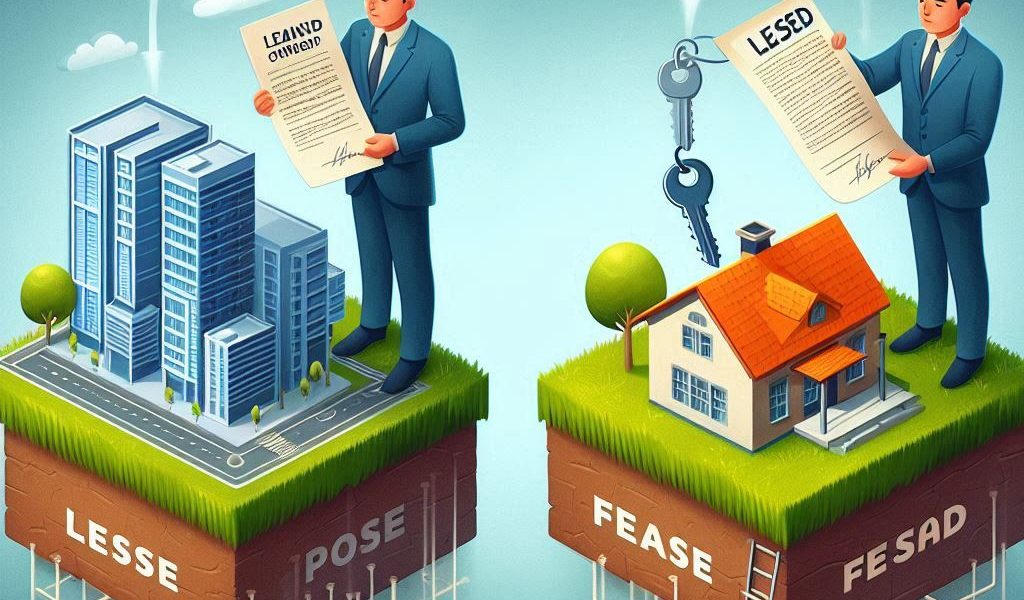When it comes to buying or renting property, two terms frequently arise that can often confuse individuals unfamiliar with property law – Leasehold and Freehold. These terms define different types of property ownership, and understanding the differences between them is crucial for potential buyers, investors, and real estate professionals.
In this blog, we’ll explore the key distinctions between leasehold and freehold properties, how they affect ownership rights, the implications for buyers, and what you need to know before making a property investment decision. Whether you’re looking to purchase a home or investing in real estate, this guide will provide you with the essential information in a legally safe, informative manner.
What is Freehold Property?
A freehold property represents the most complete form of ownership. When you buy a freehold property, you own both the building and the land on which it stands. This means that you have full control over the property, and the ownership is typically for an indefinite period. The key feature of freehold property is that it is not subject to a lease agreement with an external party.
Key Features of Freehold Property:
- Full Ownership: The buyer owns the land and the property on it without any time limit or expiry.
- Indefinite Tenure: As a freeholder, you have ownership for an indefinite period. You can transfer, sell, or pass the property to heirs.
- Control Over Modifications: Freeholders generally have the freedom to make alterations or modifications to the property (subject to local regulations and planning permission).
- No Lease Terms: Freehold properties are not subject to lease agreements or restrictions tied to leasehold terms.
- Higher Costs: Freehold properties tend to be more expensive due to the complete ownership of both land and building.
What is Leasehold Property?
A leasehold property, on the other hand, involves owning the building or structure on the land, but the land itself is owned by a separate entity, often referred to as the “freeholder” or “landlord.” The leaseholder essentially leases the property for a number of years, decades, or even centuries, but the ownership of the land remains with the freeholder.
Key Features of Leasehold Property:
- Ownership of Property (Not Land): As a leaseholder, you own the building, but the land is leased from the freeholder for a fixed period.
- Fixed Term: The leasehold agreement specifies the duration of the lease, which could range from a few years to 999 years. Once the lease term expires, the ownership of the property reverts to the freeholder unless the lease is extended.
- Renewal of Lease: Leaseholders may have the option to extend the lease for a further term, but this typically involves negotiation and costs. When the lease is near expiry, the property’s value may decrease, as lenders may be hesitant to lend on properties with short leases.
- Rent Payments: In most leasehold agreements, the leaseholder pays rent to the freeholder (known as “ground rent”). There may also be additional charges for maintenance or management fees for shared areas.
- Restrictions: Leasehold properties often come with certain restrictions, such as limitations on alterations or renovations, and may require permission from the freeholder for certain actions.
Key Differences Between Leasehold and Freehold Property
Understanding the core differences between leasehold and freehold properties is vital before making a property purchase decision.
- Ownership Structure:
- Freehold: You own both the property and the land.
- Leasehold: You own the property, but the land belongs to a third-party freeholder.
- Duration:
- Freehold: The ownership is perpetual; it lasts as long as you own the property.
- Leasehold: The ownership is for a fixed term, typically between 99 to 999 years. Once the term ends, ownership of the property reverts to the freeholder unless renewed.
- Control Over Property:
- Freehold: You have full control over your property and land, subject to local regulations.
- Leasehold: You may be limited in how much you can modify the property and often need permission from the freeholder.
- Costs:
- Freehold: The upfront cost is higher, but there are no ongoing ground rent payments. Maintenance costs for the property and land fall solely on the freeholder.
- Leasehold: The initial cost is generally lower, but you must pay ground rent and possibly service charges. The lease may require renewal after a certain period, which could incur additional costs.
- Property Value:
- Freehold: Typically retains its value over time, as it offers indefinite ownership.
- Leasehold: As the lease term decreases, the property’s value may decrease as well, especially if the lease is nearing expiration.
Which is Better: Leasehold or Freehold Property?
Both freehold and leasehold properties have their advantages and disadvantages, and the choice largely depends on your preferences, budget, and long-term plans.
Advantages of Freehold Property:
- Complete Ownership: You own both the land and the property, offering the maximum flexibility in terms of usage, renovation, and resale.
- No Lease Expiry: There is no concern about the lease running out or needing to be renewed, giving you peace of mind for the long term.
- Higher Value Over Time: Freehold properties tend to maintain or increase in value over time, making them a better investment in many cases.
Advantages of Leasehold Property:
- Lower Initial Cost: Leasehold properties tend to have a lower purchase price than freehold properties, making them more affordable, especially for first-time buyers.
- Less Maintenance Responsibility: The freeholder is often responsible for maintaining the land, which can reduce costs and responsibilities for the leaseholder.
- Good for Short-Term Investments: If you plan to live in the property for a specific number of years, leasehold might be a more affordable option.
Potential Legal Pitfalls in Leasehold Property
While leasehold properties can be appealing due to their lower initial cost, they come with certain legal considerations that should not be overlooked:
- Ground Rent: It’s essential to understand the terms of ground rent. Some leasehold properties may have escalating ground rent, which could become a financial burden over time.
- Lease Extension Costs: If the lease is close to expiring, the cost of extending it can be substantial. Failing to extend the lease in time may lead to the loss of property value.
- Restrictions on Property Use: Leasehold agreements may contain clauses that restrict how you can use or modify the property. Violating these terms can lead to legal action.
- Saleability: Some lenders are hesitant to finance properties with short leases, and this can affect the ability to sell the property in the future.
Conclusion
Choosing between leasehold and freehold property is a crucial decision that depends on individual preferences, financial situations, and long-term plans. Freehold properties offer the benefit of complete ownership and flexibility, while leasehold properties may be more affordable initially but come with certain restrictions and long-term considerations.




